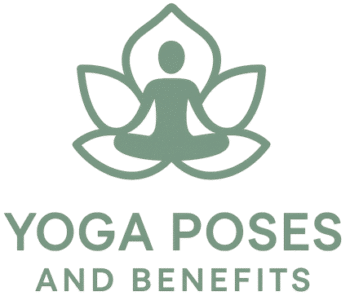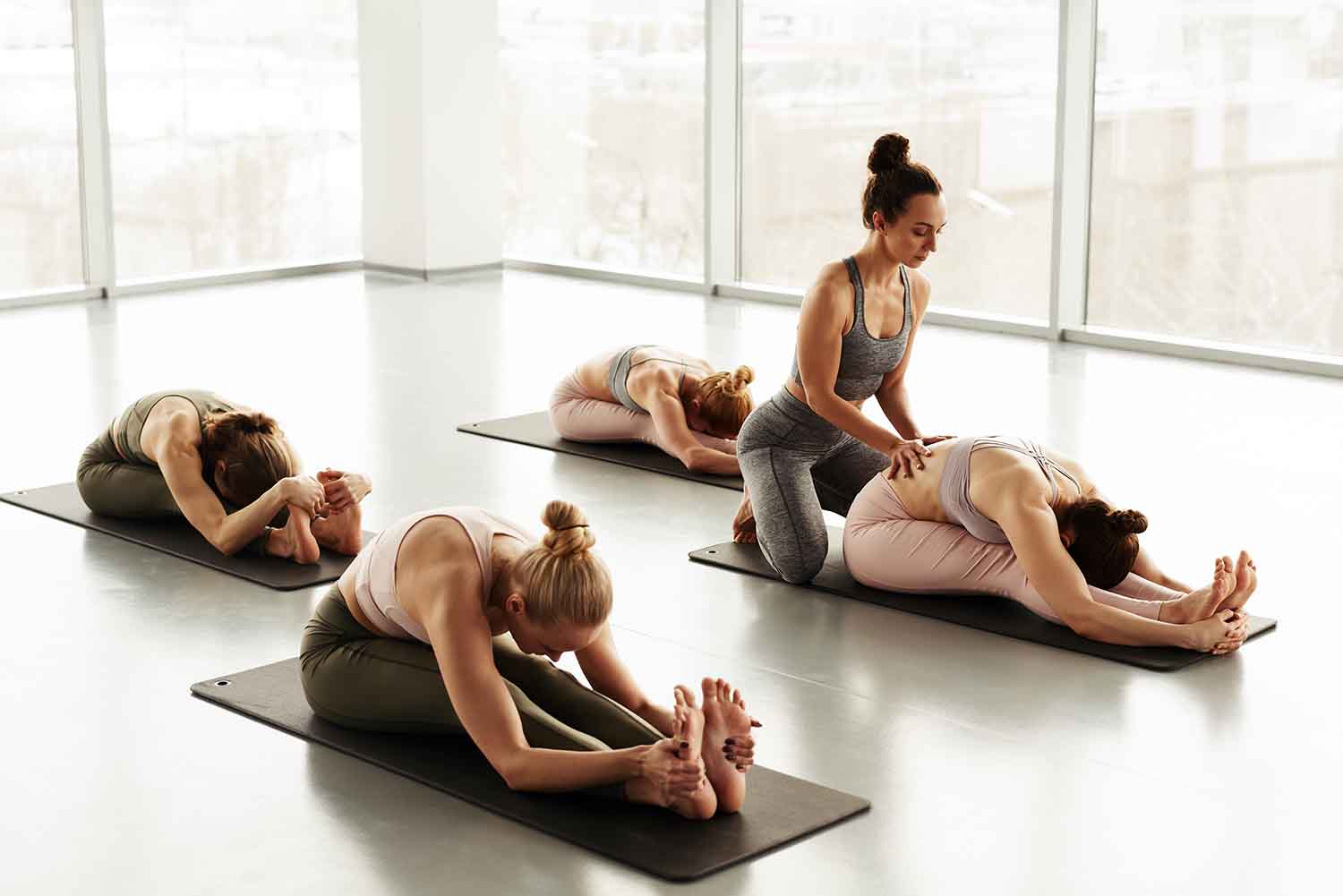Yin yoga is a slow-paced, meditative style of yoga that targets the body’s deep connective tissues, such as fascia, ligaments, and joints. Unlike more dynamic practices like hatha yoga, which focus on building strength and flexibility through continuous movement, yin yoga encourages students to hold poses for extended periods—often between 3 to 5 minutes. This allows the body’s tissues to stretch and release tension more effectively. Yin yoga also encourages energy flow through the body’s meridians, similar to the principles of Traditional Chinese Medicine.
In contrast to yang-based practices like vinyasa, which are more active, yin yoga emphasizes stillness and relaxation. This meditative approach allows students to cultivate mindfulness and awareness of the body and mind. The long-held poses provide time for introspection and stress reduction, which are essential for managing both physical and mental tension.
Some popular yin yoga postures include seated forward folds, supine twists, and hip openers, all of which gently stretch the body’s deeper tissues. Research in the Journal of Complementary and Integrative Medicine highlights how yin yoga’s long-held stretches promote improved flexibility, reduced stress levels, and enhanced overall well-being.
The benefits of yin yoga extend beyond physical health; it fosters mental clarity, patience, and calm. With consistent practice, students can develop a deeper connection between their body and mind, making yin yoga a valuable complement to faster-paced classes or a standalone practice for relaxation and renewal.
The Benefits of Yin Yoga for the Body and Mind
Yin yoga has a profound effect on the body by targeting deep connective tissues, rather than focusing primarily on muscles as in more dynamic yoga styles. By holding poses for several minutes, yin yoga gently stretches and stimulates these tissues, promoting greater flexibility and mobility over time. This practice enhances joint health by improving circulation to areas that are often neglected in faster-paced movements.
Key benefits of yin yoga on the body include:
- Improved flexibility and joint mobility: Long-held poses gradually stretch connective tissues, allowing for deeper flexibility and greater range of motion.
- Release of tension: Poses like forward folds and hip openers help alleviate tightness in areas such as the hips, lower back, and shoulders.
- Enhanced energy flow: Yin yoga encourages the flow of energy, or “qi,” through the body’s meridians, promoting vitality and balance.
- Reduced stress and improved relaxation
- Enhanced circulation to deeper tissues
Additionally, yin yoga activates the parasympathetic nervous system, which is responsible for the body’s rest-and-digest response. This activation promotes relaxation, reduces stress, and helps lower cortisol levels, contributing to a more balanced mental state.
A consistent yin yoga practice improves flexibility, reduces stiffness, and supports long-term joint health, while also fostering mental clarity and emotional well-being.
Yin Yoga vs. Restorative Yoga
Yin yoga and restorative yoga are both slower, more meditative styles of yoga, but they differ significantly in their goals, the way poses are held, and their effects on the body.
Goals and Focus:
- Yin Yoga: The primary focus of yin yoga is to target deep connective tissues such as fascia, ligaments, and joints. Yin yoga aims to improve flexibility, joint mobility, and overall body resilience. By holding poses for longer periods (typically 3-5 minutes), practitioners create gentle stress on these tissues, encouraging them to lengthen and release tension over time. Yin yoga is also designed to enhance the flow of energy through the body’s meridians, similar to the concept of “qi” in Traditional Chinese Medicine.
- Restorative Yoga: Restorative yoga focuses on relaxation and stress relief. Its primary goal is to restore the body and mind through total relaxation. Poses in restorative yoga are supported by props like bolsters, blankets, and blocks to ensure maximum comfort. The objective is not to stretch or work the tissues but to allow the body to fully relax and recover. Restorative yoga is especially useful for reducing stress and anxiety, promoting deep rest, and recovering from physical or emotional exhaustion.
Yin Yoga Poses and the Role of Stillness
Popular Yin Yoga Poses:
- Dragon Pose: A deep hip opener that stretches the hip flexors and quadriceps. This pose helps release tension stored in the hips, a common area for emotional stress. By holding Dragon for several minutes, practitioners can access tight muscles and joints that are often neglected in faster-paced practices.
- Caterpillar Pose: A forward fold that targets the spine and hamstrings. Holding this posture for 3-5 minutes promotes spinal flexibility and improves circulation to the lower back. This stretch encourages the spine to decompress and relax, aiding in stress relief.
- Sphinx Pose: A gentle backbend that strengthens the spine and improves mobility. By passively holding this pose, gravity helps to deepen the backbend, which can alleviate lower back tension.
The key to yin yoga lies in the extended time spent in each pose, typically between 3 to 5 minutes. These longer holds allow the fascia—the body’s connective tissue—to release deeply, increasing flexibility and joint mobility over time. As students remain still in each pose, they develop body awareness, mindfulness, and a heightened connection to subtle sensations. This focus on stillness contributes to emotional and physical balance. Studies confirm that yin yoga enhances joint health and reduces overall stress.
The Importance of Stillness in Yin Yoga
Stillness is a core component of yin yoga. Unlike dynamic forms of yoga that focus on continuous movement, yin yoga emphasizes holding poses for extended periods. This intentional stillness allows the body to relax deeply, giving connective tissues the time they need to stretch and release tension. By staying still in poses for 3-5 minutes or longer, the body’s fascia and joints receive the sustained pressure necessary for long-term flexibility and joint health.
Stillness in yin yoga also offers an opportunity to cultivate mindfulness. With minimal physical movement, practitioners can focus on subtle sensations in the body, enhancing the connection between mind and body. Stillness promotes introspection and mental clarity, which helps reduce mental chatter and bring attention to the present moment. Yin yoga’s meditative stillness provides a contrast to faster, yang-based practices that emphasize physical exertion.
Moreover, stillness in yin yoga activates the parasympathetic nervous system, promoting relaxation and reducing stress. This combination of stillness, mindfulness, and sustained pressure provides a holistic approach to healing and well-being.
Incorporating Yin Yoga into Your Practice
How to Begin a Yin Yoga Practice:
To begin a yin yoga practice, create a calm, quiet environment where you can focus without distractions. Yin yoga is a slow, introspective style of yoga, so it’s important to approach it with patience and a willingness to embrace stillness. Start by holding poses for 1-2 minutes, then gradually work up to longer holds of 3-5 minutes as your body adapts.
Focus on poses that target the body’s deeper connective tissues, such as the hips, spine, and lower back. Common beginner poses include Caterpillar Pose (a seated forward fold), Dragon Pose (a deep hip opener), and Sphinx Pose (a gentle backbend). Each of these postures improves flexibility and mobility while releasing tension from the body’s deeper layers.
Props like blocks or bolsters can provide support, helping you relax into the poses more fully. Remember, yin yoga is not about perfect alignment; it’s about finding a mild stretch that you can hold comfortably over time.
Consistency is key. Try incorporating yin yoga into your weekly routine to experience its full benefits, including enhanced flexibility, mindfulness, and emotional balance.
Sources:
- “The Effectiveness of Yin Yoga in Promoting Flexibility and Mental Well-Being.” Journal of Complementary and Integrative Medicine, vol. 17, no. 3, 2020, pp. 241-250.
- Cohen, Kenneth S. The Way of Qigong: The Art and Science of Chinese Energy Healing. Ballantine Books, 1997.
- “Yin Yoga for Joint Health: Benefits of Long-Held Stretches.” Journal of Bodywork and Movement Therapies, vol. 23, no. 4, 2019, pp. 768-773.

